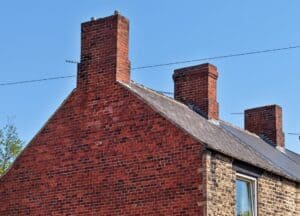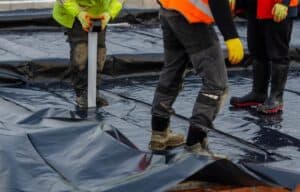How to Insulate a Barn Roof
 Insulation plays an important role in any property. Without it, you’ll struggle to retain heat within the structure, which means the property will have low thermal efficiency. If a lack of insulation leads to cold areas within the walls or roof, this can also cause condensation to form, which may result in damp or mould developing.
Insulation plays an important role in any property. Without it, you’ll struggle to retain heat within the structure, which means the property will have low thermal efficiency. If a lack of insulation leads to cold areas within the walls or roof, this can also cause condensation to form, which may result in damp or mould developing.
While virtually all properties need some form of insulation, there are different types available. Due to this, it’s important to know what type of insulation to use and how to install it if you’ve building or purchasing a barn conversion.
Does the Barn Have an Attic Space?
 In standard residential homes, the attic space is often used to house insulation. In barn conversions, however, there isn’t always this type of space. In fact, if the property embraces the traditional design of the barn, it’s unlikely to have any type of usable attic space. Instead, it may be more akin to a pole barn, which features two pitches and a single ridge.
In standard residential homes, the attic space is often used to house insulation. In barn conversions, however, there isn’t always this type of space. In fact, if the property embraces the traditional design of the barn, it’s unlikely to have any type of usable attic space. Instead, it may be more akin to a pole barn, which features two pitches and a single ridge.
If so, you’ll need to determine how and where insulation can be applied. Fortunately, there are innovative products out there that ensure a barn roof can be properly insulated.
Insulating a Barn Roof
With spray insulation foam, for example, the thermal efficiency of the barn can be increased, without impacting its decorative features or existing structure. However, some spray foams will create an airtight space, which reduces ventilation and prevents the property from ‘breathing’. As a result, damp and mould could form.
Alternatively, insulation boards or liners can be placed between the exterior of the roof and the interior plasterboard. These provide adequate insulation and can’t be seen once the roof is finished, so they won’t impact the aesthetic of the barn. With the right installation, they can also facilitate ventilation, which is an important way of improving the functionality of a property.
Barn Wall Insulation
If you’re converting a barn or you want to increase the thermal efficiency of an existing conversion, you could consider adding or upgrading its wall insulation. With cavity walls, for example, insulation can be placed inside in the form of foam, loose fill, insulation boards or a reflective system.
Although you’ll still need some form of roof insulation in a barn conversion, increasing the functionality of the wall insulation will enhance the barn’s overall thermal efficiency and help you to retain more heat.
